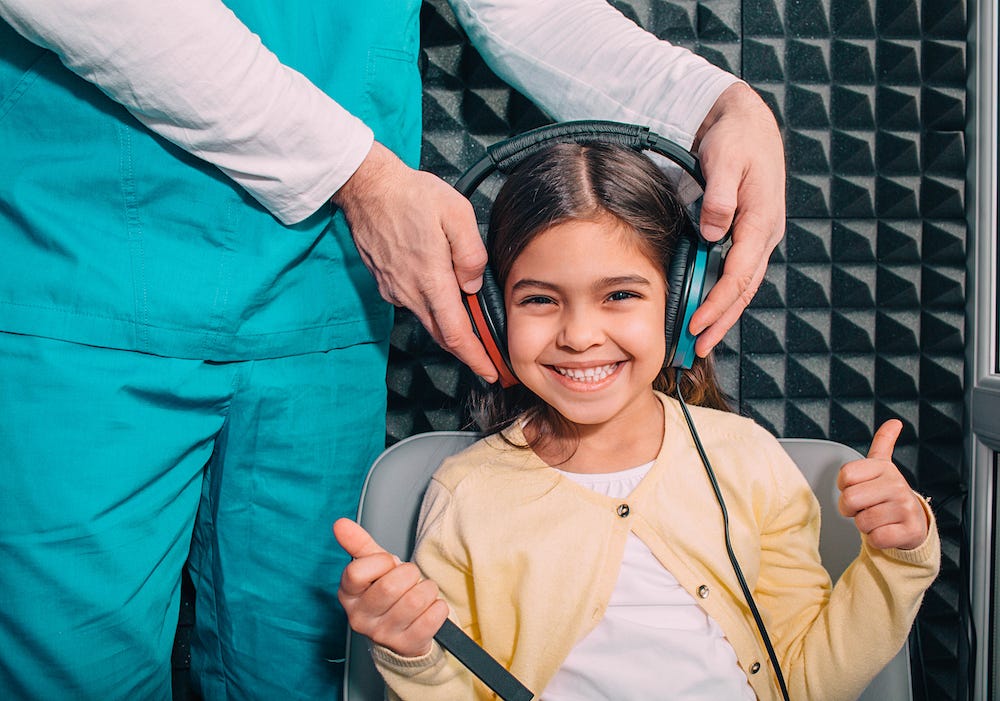Gene therapy restores hearing in deaf children and adults
A new study shows gene therapy can restore hearing in people with congenital deafness, offering life-changing results across age groups.

The recent study involved ten people, ranging from toddlers to young adults, who all had hearing loss due to OTOF mutations. (CREDIT: Shutterstock)
Scientists have made major progress in treating congenital deafness using gene therapy. This approach repairs hearing loss by fixing the root cause—a faulty gene known as OTOF. The OTOF gene creates otoferlin, a protein that helps send sound signals from the ear to the brain. When this gene is mutated, it can lead to severe or total deafness from birth.
To restore hearing, researchers use a modified adeno-associated virus (AAV), called Anc80L65, to carry a working copy of the OTOF gene. This virus delivers the gene directly to cells in the inner ear through a single injection at the base of the cochlea. Once inside, the gene helps the cells start producing otoferlin, allowing sound signals to reach the brain again.
This method was first tested in mice and nonhuman primates, where it proved both safe and effective. Based on those findings, a small clinical trial began, showing strong results in children. Researchers wanted to see if the same treatment could work in older patients too.
A Trial Expands Across Ages and Centers
The recent study involved ten people, ranging from toddlers to young adults, who all had hearing loss due to OTOF mutations. Conducted at five hospitals in China, the trial aimed to evaluate both safety and hearing improvement. Each participant received the gene therapy in one or both ears.
The therapy was well tolerated. Across all patients, 162 mild or moderate side effects were reported, with the most common being a drop in neutrophils, a type of white blood cell. No serious adverse effects occurred during the six to twelve months of follow-up.
Auditory tests showed striking improvements. On average, patients’ hearing thresholds—measured in decibels—improved from 106 dB to 52 dB, meaning they could hear much quieter sounds after treatment. Click auditory brainstem response (ABR), tone-burst ABR, and auditory steady-state response also improved across the board.
Related Stories
- Finger-tapping trick can sharpen your hearing against background noise
- Groundbreaking study reveals hidden hearing modes within the human ear
- New mobile app clinically proven to treat tinnitus
One month after receiving the therapy, most participants had already regained a large portion of their hearing. That rapid response showed that the therapy acts quickly and effectively. Researchers also found that click and tone-burst ABR results could accurately predict later hearing gains, while the steady-state response was less reliable.
Children Show the Most Dramatic Improvements
The strongest results were seen in children, especially those between five and eight years old. One seven-year-old girl regained nearly full hearing within four months and was able to carry on normal conversations with her mother. This suggests that the younger the patient, the better the outcome, although even adults gained improved hearing.
Earlier trials in China had tested the therapy in children, but this was the first time it was tried in adolescents and adults. The results confirmed that gene therapy could help people across a wider age range, not just young children. However, researchers noted that the degree of hearing improvement did tend to decline with age.
“This is a huge step forward in the genetic treatment of deafness, one that can be life-changing for children and adults,” said Dr. Maoli Duan from Karolinska Institutet in Sweden, one of the study’s lead authors. “We will now be following these patients to see how lasting the effect is.”
What Comes Next in Hearing Restoration
The research team, working with institutions like Zhongda Hospital at Southeast University, plans to keep monitoring the participants for several more years to evaluate long-term safety and effectiveness. The trial is registered with ClinicalTrials.gov under the identifier NCT05901480.
Dr. Duan emphasized that OTOF gene therapy is just the beginning. His team is now investigating other common causes of genetic deafness, such as mutations in GJB2 and TMC1. These genes are more complex, but early studies in animals have shown positive results. Future therapies may help a much wider group of patients with hearing loss.
The therapy was developed with support from Otovia Therapeutics Inc., a biotech company that also funded parts of the study. A full list of conflicts of interest is available in the published article in Nature Medicine.
For now, these early results offer hope to individuals and families affected by inherited hearing loss. The treatment may one day change the future for millions who live in silence—not just by improving hearing, but by restoring connection, language, and quality of life.
Note: The article above provided above by The Brighter Side of News.
Like these kind of feel good stories? Get The Brighter Side of News' newsletter.



